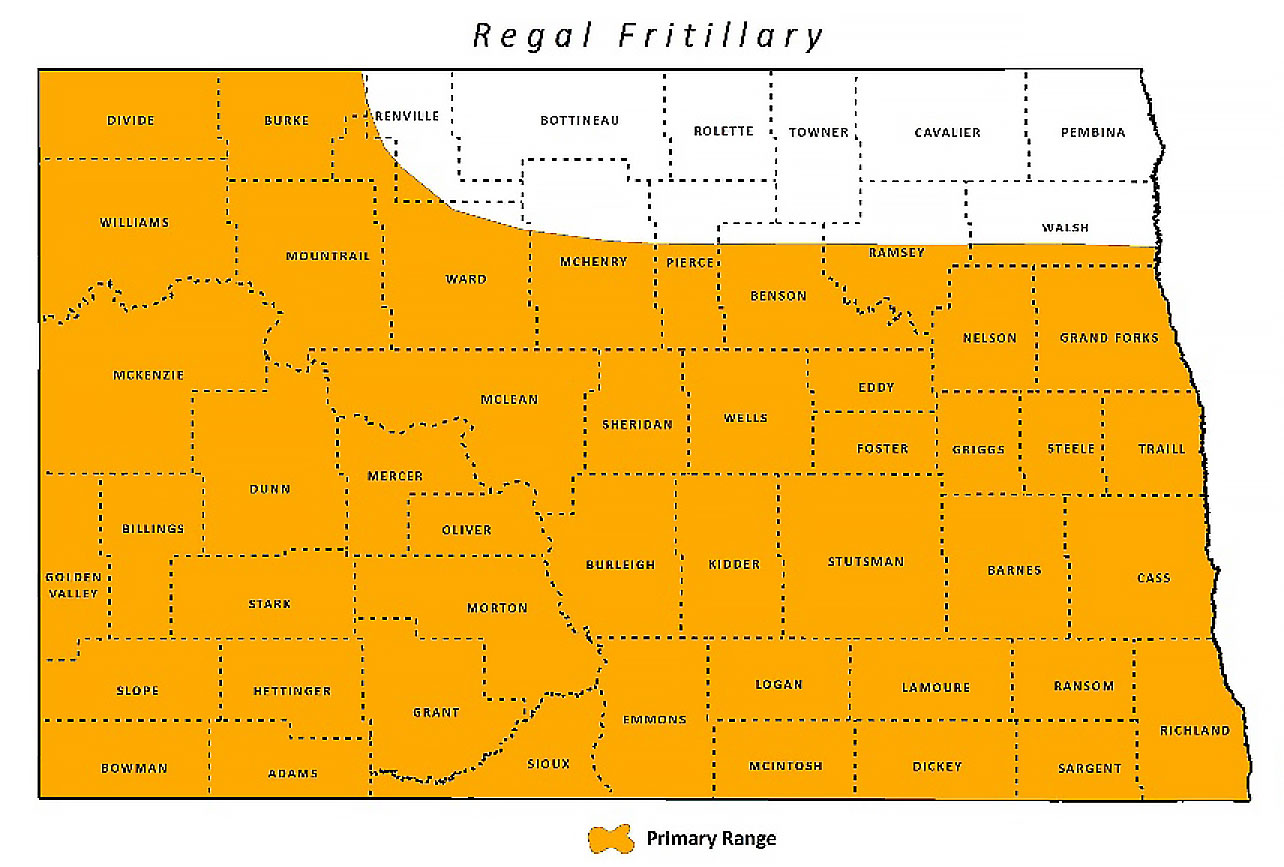
Regal Fritillary
| Scientific Name | Speyeria idalia |
|---|---|
| General Description | Forewings orange with black bars running between veins. Hind wings are darker orange to black with a pattern of white spots present. |
| Status | Resident. |
| Abundance | Rare. |
| Primary Habitat | Regal Fritillaries are found in tall-grass and wet prairie habitats. Native plants are the preferred food source with native violets required for larva. |
| Federal Status | Petitioned for listing in 2013. |
| Reason for Designation | The loss and fragmentation of prairie habitat. |
Locations and Conditions of Key Habitat
Preferred Habitat
Regal Fritillary is typically found in tall-grass prairie remnants and other native prairie habitats. Regal Fritillary larva relies exclusively on native violets as a food source. Areas with high density of violets will contain both caterpillars and adults.
Key Areas and Conditions for Regal Fritillary in North Dakota
The southeast quarter of the state provides the best habitat remaining for this species, but may be encountered state- wide in patches of quality habitat.
Problems Which May Affect this Species
Habitat
The loss of native habitat especially those that contain violets is the primary cause for this species decline. Loss of habitat with high quality nectar sources for adults, such as native prairie is also a concern. Connectivity between useable habitats is a concern.
Other Natural or Manmade Factors
The use of herbicide for weed control at certain times of the year in native prairie tracts may be a detriment by reducing nectar sources for the butterfly. Insecticide use near populations may also a factor.
Research and Survey Efforts
Current Research or Surveys
- NDSU is currently collecting habitat data on rare prairie butterflies.
Previous Research or Surveys
- Royer surveyed butterflies at a number of sites in North Dakota.
Additional Research or Surveys Needed
- Training of additional biologists to identify and survey prairie butterflies is needed.
- Implementation of a monitoring protocol for this species.
Management Recommendations
- Develop pollinator habitat.
- Protect and manage high quality native prairie.
- Develop connectivity between quality habitats.
- Delay haying of habitat until after end of adult flight.
- Planting native nectar plants to improve habitat.
- Avoid broadcast spraying of pesticides and herbicides at known sites to minimize loss of adults and nectar sources.
Monitoring Plans
The North Dakota Game and Fish Department currently does not have a monitoring protocol for this species.
2005-2015 PROGRESS
The Regal Fritillary was added as a Level I Species of Conservation Priority during the 2015 Wildlife Action Plan revision. The regal fritillary is currently under consideration for listing under the Theatened and Endangered Species Act.

Note: A listing of works consulted when compiling the information on this page may be found in the 2015 State Wildlife Action Plan.
